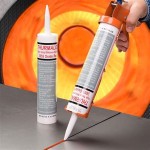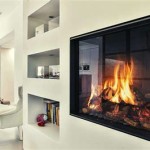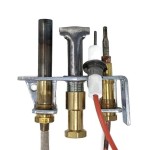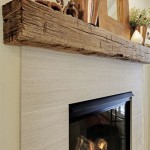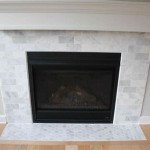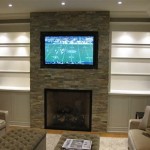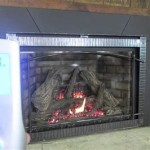Wood-Burning Fireplace Inserts: Efficiency, Aesthetics, and Installation
Wood-burning fireplace inserts are self-contained heating appliances designed to fit into existing masonry fireplaces. They offer an efficient and controlled method of burning wood for supplemental heating purposes. Unlike open fireplaces, which typically lose a significant amount of heat up the chimney, inserts are engineered to radiate heat into the room while minimizing heat loss. Understanding the function, types, benefits, and challenges associated with wood-burning fireplace inserts is essential for homeowners considering this heating option.
The primary function of a wood-burning fireplace insert is to convert the energy contained in wood into usable heat for a home. They achieve this through a closed combustion system that carefully controls airflow and promotes more complete burning of the wood. This controlled combustion results in higher heating efficiency and lower emissions compared to traditional open fireplaces. The insert’s firebox is typically surrounded by a steel or cast iron shell, which radiates heat into the room. Many inserts also incorporate a blower fan to further distribute the heated air.
Key Point 1: Types of Wood-Burning Fireplace Inserts
Wood-burning fireplace inserts are available in various models, each offering different features and benefits. The selection of an appropriate insert depends on factors such as the size of the fireplace opening, the desired heating capacity, and the homeowner's budget.
One significant differentiating factor is the material used in the firebox construction. Cast iron inserts are known for their excellent heat retention capabilities. They absorb heat slowly and radiate it steadily over a longer period. This makes them ideal for sustained heating. Steel inserts, on the other hand, heat up more quickly but also cool down faster. They are often more affordable than cast iron models and can be a suitable option for those who need a faster heating response.
Another key distinction is between catalytic and non-catalytic inserts. Catalytic inserts employ a catalytic combustor, which is a honeycomb-shaped device coated with a catalyst. This catalyst promotes the oxidation of unburned gases and particles at a lower temperature, resulting in more complete combustion and reduced emissions. Catalytic inserts are generally more efficient and cleaner-burning than non-catalytic models. However, the catalytic combustor requires periodic replacement, which adds to the overall cost.
Non-catalytic inserts rely on engineered airflow patterns and firebox design to achieve complete combustion. They typically feature a baffle system that forces the hot gases to remain in the firebox longer, allowing them to burn more completely. While non-catalytic inserts may not be as efficient as catalytic models, they are generally less expensive to operate and maintain.
The size of the insert is also crucial. Inserts are rated by their heating capacity, typically measured in British Thermal Units (BTUs). It's vital to select an insert with a BTU rating that is appropriate for the size of the space to be heated. An undersized insert will struggle to provide adequate heat, while an oversized insert may lead to overheating and inefficient operation.
Finally, aesthetic considerations play a role in the selection process. Inserts are available in a variety of styles and finishes to complement different home décor. Some models feature decorative doors, trim, and other embellishments to enhance their visual appeal.
Key Point 2: Benefits of Using Wood-Burning Fireplace Inserts
Wood-burning fireplace inserts offer several advantages over open fireplaces, making them a more attractive option for homeowners seeking an efficient and cost-effective heating solution.
Improved Heating Efficiency represents a major benefit. As mentioned earlier, open fireplaces are notoriously inefficient, with most of the heat escaping up the chimney. Inserts, on the other hand, are designed to maximize heat output and minimize heat loss. By controlling airflow and promoting complete combustion, they can achieve heating efficiencies of up to 80% or higher. This translates into lower fuel consumption and reduced heating costs.
Enhanced Safety is another critical factor. Open fireplaces pose several safety hazards, including the risk of sparks and embers escaping into the room. Inserts are enclosed units that prevent sparks and embers from escaping, reducing the risk of fire. They also eliminate the risk of backdrafting, which can occur when smoke and combustion gases are drawn back into the home.
Reduced Emissions is a significant environmental benefit. Modern wood-burning inserts are designed to produce significantly lower emissions than traditional fireplaces. Catalytic inserts, in particular, can achieve very low emission levels, making them a cleaner-burning option. By reducing emissions, inserts contribute to improved air quality and reduced environmental impact.
Zone Heating Capability is also an advantage. Inserts allow homeowners to heat specific areas of their home, rather than heating the entire house. This is particularly useful for those who spend most of their time in a single room or area. By focusing the heat in these areas, homeowners can reduce their overall heating costs and improve their comfort level.
Increased Home Value: A well-maintained and efficient wood-burning fireplace insert can increase the value of a home. It is often seen as a desirable feature by potential buyers, particularly in regions where wood heating is common.
Key Point 3: Installation and Maintenance of Wood-Burning Fireplace Inserts
Proper installation is essential for the safe and efficient operation of a wood-burning fireplace insert. It is generally recommended to have the insert installed by a qualified professional. The installation process typically involves several steps, including:
Inspection of the existing fireplace and chimney is the first step. This inspection ensures that the fireplace and chimney are in good condition and capable of safely accommodating the insert. Any necessary repairs or modifications must be made before proceeding with the installation.
Installation of a chimney liner is very important. Most building codes require the installation of a stainless steel chimney liner when installing a wood-burning insert. The liner provides a smooth, airtight flue that improves draft and prevents creosote buildup. The liner is typically installed by threading it down the existing chimney and connecting it to the insert.
Sealing the insert to the fireplace opening is also necessary. The insert must be properly sealed to the fireplace opening to prevent air leaks and ensure that all combustion gases are vented up the chimney. This is typically done using a fire-resistant sealant or gasket material.
Connecting the blower fan to a power source is also necessary if the insert has a blower fan. The fan needs to be connected to a dedicated electrical circuit and properly grounded.
Regular maintenance is also crucial for ensuring the long-term performance and safety of a wood-burning fireplace insert. This includes:
Regular chimney sweeping helps prevent creosote buildup. Creosote is a flammable substance that can accumulate in the chimney over time. It is essential to have the chimney swept regularly by a qualified chimney sweep to remove creosote and prevent chimney fires. The frequency of chimney sweeping depends on the amount of wood burned and the type of wood used. Generally, it is recommended to have the chimney swept at least once a year.
Inspection of the insert for signs of wear and tear should be done periodically. This includes checking the firebox for cracks or damage, inspecting the door seal for leaks, and verifying that the blower fan is operating properly. Any necessary repairs should be made promptly to prevent further damage and ensure safe operation.
Proper wood storage is also important to maintain good air quality and good combustion inside the insert. Wood should be stored in a dry, well-ventilated area. Wet or green wood burns inefficiently and produces more smoke and creosote. It is best to use seasoned wood that has been air-dried for at least six months. Aim for a moisture content of less than 20% for optimal burning.
Removal of ashes from the firebox is important. Ashes should be removed regularly to maintain proper airflow and prevent overheating. Use a metal container with a tight-fitting lid to dispose of ashes safely. Allow the ashes to cool completely before disposing of them.
Understanding the operational aspects of the insert, including proper loading techniques, air control settings, and fuel selection, is important for maximizing efficiency and minimizing emissions. Refer to the manufacturer's instructions for specific recommendations related to the model.
The selection and use of wood-burning fireplace inserts require careful consideration of factors such as insert type, sizing, installation requirements, and maintenance needs. Proper attention to these details can result in a safe, efficient, and cost-effective heating solution that enhances the comfort and value of a home.

Wood Burning Fireplace Inserts 1 Stove Insert Dealer

Wood Burning Fireplace Inserts Insert Installation

Wood Inserts We Love Fire

Why A Wood Burning Fireplace Insert Bethesda Md Service

Lopi Premium Wood Fireplace Inserts Custom Hearth Fireplaces And Stoves

Wood Inserts Fireplace Xtrordinair Made In America

Napoleon Epi3 Wood Fireplace Insert Inserts By

Rais 60 Insert Wood Fireplace For

Osburn 3500 Wood Burning Fireplace Insert 31 Ob03510 Hvacdirect Com

Ventis Hei240 Wood Burning Insert
Related Posts

